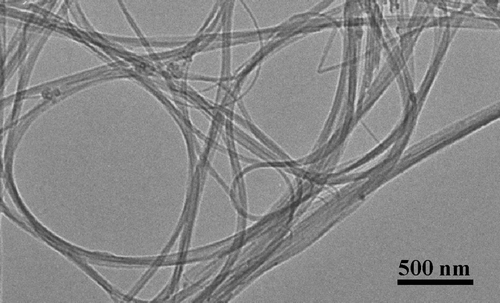ABSTRACT:
Single-walled carbon-nanotubes (SWCNTs) in their as-grown state contain a large quantity of impurities such as catalytic particles and encapsulating graphitic shells. Previous purification approaches usually depended upon severe oxidation. But such oxidation in either a gas phase or a liquid phase induces structural destruction and a big loss of the SWCNT material. In this study, a new method is reported that involves transformation of catalytic iron particles to iron oxide at a low temperature of 400 °C, removal of graphitic shells by reaction with the encapsulated iron oxide at a high temperature of 800–900 °C, and final elimination of iron oxide particles by HCl. Experimental results, based on transmission electron microscopy, Raman spectroscopy, thermogravimetric analysis, and near-infrared spectroscopy, show that catalytic particles and encapsulating graphitic shells can be removed. More importantly, this highly efficient purification induces little damage to the graphitic structure of SWCNTs. These observations are in strong contrast with those from the samples purified in HCl or HNO3. The present method may be applied for highly efficient and nondestructive purification of CNT materials of any origin to be used in wide areas.
